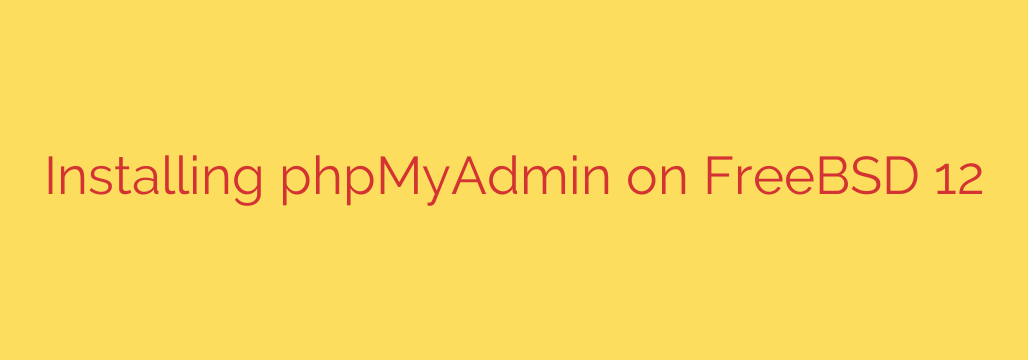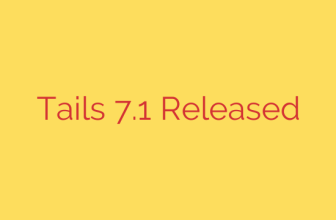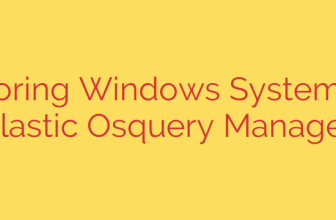
A Step-by-Step Guide to Installing and Securing phpMyAdmin on FreeBSD 12
Managing MySQL or MariaDB databases from the command line is powerful, but for many developers and system administrators, a graphical interface is indispensable for speed and efficiency. This is where phpMyAdmin shines. It provides a comprehensive, web-based interface for handling everything from creating databases and managing users to running complex queries.
This guide will walk you through the complete process of installing, configuring, and—most importantly—securing phpMyAdmin on a FreeBSD 12 server. Following these steps will ensure you have a functional and hardened database management tool.
Prerequisites
Before we begin, you must have a working FAMP (FreeBSD, Apache, MySQL, PHP) or LEMP (FreeBSD, Nginx, MySQL, PHP) stack installed and configured. Specifically, you will need:
- A server running FreeBSD 12.
- A web server (Apache or Nginx).
- PHP installed with necessary extensions (like
mysqli,session, andmbstring). - A running MySQL or MariaDB database server.
- Root or
sudoprivileges.
Step 1: Installing phpMyAdmin with pkg
FreeBSD’s package manager, pkg, makes the initial installation straightforward. Open your terminal and run the following command to install the latest version of phpMyAdmin from the official repositories.
sudo pkg install phpmyadmin
This command will download and install phpMyAdmin and all its required PHP dependencies. The core files will typically be placed in /usr/local/www/phpMyAdmin/.
Step 2: Configuring Your Web Server
Next, you need to tell your web server how to access the phpMyAdmin files. The configuration differs slightly between Apache and Nginx.
For Apache Users
The recommended method for Apache is to create a dedicated configuration file. This keeps your main httpd.conf file clean and makes management easier.
Create a new configuration file:
bash
sudo ee /usr/local/etc/apache24/Includes/phpmyadmin.conf
Add the following
Aliasdirective to the file. This maps the/phpmyadminURL to the actual file directory.Alias /phpmyadmin "/usr/local/www/phpMyAdmin/" <Directory "/usr/local/www/phpMyAdmin/"> Options FollowSymLinks AllowOverride All Require all granted </Directory>Save the file and exit the editor.
Restart Apache to apply the changes:
bash
sudo service apache24 restart
For Nginx Users
For Nginx, you’ll need to add a location block to your server’s configuration file (usually located in /usr/local/etc/nginx/nginx.conf or a site-specific file).
Open your Nginx server block configuration file.
Add the following
locationblock inside yourserver { ... }block.location /phpmyadmin { root /usr/local/www; index index.php;location ~ \.php$ { try_files $uri =404; fastcgi_pass unix:/var/run/php-fpm.sock; # Adjust if your socket path is different fastcgi_index index.php; fastcgi_param SCRIPT_FILENAME $request_filename; include fastcgi_params; }}
Save the file and check your Nginx configuration for syntax errors:
bash
sudo nginx -t
If the syntax is correct, reload Nginx to apply the new configuration:
bash
sudo service nginx reload
Step 3: Creating the phpMyAdmin Configuration
phpMyAdmin requires a config.inc.php file for its core settings. A sample file is provided, which we can copy and modify.
Navigate to the phpMyAdmin directory:
bash
cd /usr/local/www/phpMyAdmin/
Copy the sample configuration file:
bash
sudo cp config.sample.inc.php config.inc.php
Now, you must set a secret passphrase, known as the
blowfish_secret. This is used to encrypt cookies and is critical for security. Open the new configuration file for editing:
bash
sudo ee config.inc.php
Find the following line:
php
$cfg['blowfish_secret'] = ''; /* YOU MUST FILL IN THIS FOR COOKIE AUTH! */
Generate a random 32+ character string and place it between the single quotes. You can use an online password generator or a command-line tool. Do not use a simple, guessable password.
Example:
$cfg['blowfish_secret'] = 'aV!9sK$qM8@ZpG3wF#rT7uN&yL1xH*cE';Save and close the file. At this point, you should be able to access phpMyAdmin by navigating to
http://your_server_ip/phpmyadminin your web browser.
Crucial Security Hardening Steps
A default installation of phpMyAdmin is a common target for attackers. Do not skip these security measures.
1. Change the Access URL
The most common attack vector is automated bots scanning for /phpmyadmin. Changing this URL is your first line of defense.
- For Apache: In your
phpmyadmin.conffile, change theAlias. For example, to change it to/managedb, you would use:
apache
Alias /managedb "/usr/local/www/phpMyAdmin/"
- For Nginx: In your server block, change the
location. For example:
nginx
location /managedb {
# ... rest of the configuration
}
Remember to restart your web server after making this change.
2. Add Web Server-Level Authentication
Adding a web server password prompt before the phpMyAdmin login page provides a powerful second layer of security.
- For Apache: Use
.htaccessand.htpasswdto create basic authentication for the directory. - For Nginx: Use the
auth_basicandauth_basic_user_filedirectives within your phpMyAdmin location block.
This simple step can block the vast majority of automated attacks.
3. Enforce HTTPS
Never access phpMyAdmin over an unencrypted HTTP connection. All login credentials and database information would be sent in plain text. Configure your web server with an SSL/TLS certificate (Let’s Encrypt provides free certificates) and force all traffic to use HTTPS.
4. Restrict Access by IP Address
If you only access phpMyAdmin from a specific IP address (like your home or office), you can configure your web server to deny all other connections. This is an extremely effective security measure.
- For Apache: Use
Require ip YOUR_IP_ADDRESSinside the<Directory>block. - For Nginx: Use
allow YOUR_IP_ADDRESS;anddeny all;inside thelocationblock.
Conclusion
You have now successfully installed and, more importantly, secured phpMyAdmin on your FreeBSD 12 server. By taking the extra steps to change the default URL, add an extra authentication layer, and enforce SSL, you have created a robust and secure environment for managing your databases. This powerful tool will now serve as a reliable asset in your web development and server administration workflow.
Source: https://kifarunix.com/how-to-install-phpmyadmin-on-freebsd-12/








